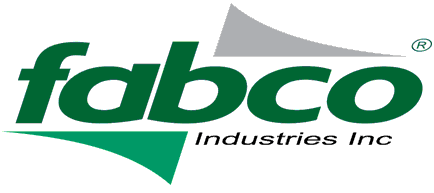Why you should filter roof runoff
It is critical to filter roof runoff. Three recent papers investigated the quality of runoff from different roof surfaces. Conventional wisdom holds that roof runoff is relatively clean. Its use as drinking water in rainwater cistern systems is well known. In other areas, managers maintain that cleaner roof runoff should be treated differently than runoff from dirtier parking lots and roads. This view is supported by extensive monitoring data for several conventional pollutants such as sediment, nutrients, organic matter, and possibly bacteria considered roof runoff .
However, according to recent studies, roof runoff is not cleaner with respect to dissolved and particulate metals such as copper, lead, and especially zinc. Thomas and Greene (1993) sampled roof runoff from two kinds of roof surfaces at urban and industrial areas in Armidale, New South Wales (Australia). Good (1993) monitored roof runoff from five different roof surfaces in a sawmill /wood processing plant on the coast of Washington. Bannerman and his colleagues (1993) examined roof runoff samples from residential, commercial, and industrial sites in Wisconsin.

Roof runoff data
Monitoring results are compared in Table 1. As shown, industrial roofs had zinc levels that were two to 20 times greater than other urban source areas and often exceeded acute toxicity for aquatic life. It appears that galvanized roofing materials are a prime source of zinc in the urban landscape. Roofing materials, paints, and coatings are also suspected of being important sources of copper and lead as well. Roofs with copper flashing were found to have copper and lead concentrations up to six to eight times greater than galvanized roofs which contribute to roof runoff.
Good (1993) also conducted toxicity studies on roof runoff from the industrial site in Washington and found that several samples were acutely toxic to rainbow trout in bioassays. The toxicity was attributed to the rapid corrosion of galvanized metal roofs and the leaching of zinc and other contaminants. It was also thought that tar-covered roofs were a source of copper. Although Good’s study only looked at the first flush from rooftops, there was evidence that toxicity remained high for up to three hours after the start of a storm. Taken together, the studies suggest that the perception that roof runoff is always a source of relatively clean water may not always hold true when industrial roof surfaces are considered. Galvanized roof coatings, in particular, appear to be a major source of zinc and other metals in the urban landscape.
The rooftop monitoring studies raise the intriguing possibility that the use of alternative roofing or roof coating materials could result in lower pollutant loadings. Thus, a pollution prevention approach that avoids or minimizes the use of metals in roofing materials could be an attractive solution. Further research into metal loading from urban roof surfaces will be helpful in designing these new roof surfaces to improve pollution from roof runoff..
References
Bannerman, R. 1994. “Sources of Urban Stormwater Pollutants
Defined in Wisconsin.” Tech. Note 15.
Watershed Protection Techniques. 1(1): 30-31. 1
Good, J.C. 1993. “Roof Runoff As a Diffuse Source of
Metals and Aquatic Toxicity in Stormwater.” Water
Science Technology. 28 (3-5): 317-322. 2
Thomas, P.R. and G.R. Greene. 1993. “RainWater Quality
From Different Roof Catchments.” Water Science
Technology. 28 (3-5) pp. 291-297. 3
U.S. EPA. 1983. Results of the Nationwide Urban Runoff
Program. Vol. 1, Final Report. Washington, D.C. 200
pp. 4

Reference material to learn more about how to filter roof runoff
Roofs are an important source of concentrated runoff from developed sites; therefore, rooftop runoff management can provide substantial benefits in highly urbanized settings where space for other BMPs is limited. Rooftop runoff management BMPs are typically applied on flat or gently sloping roofs (see Figure 19-1); however, this BMP can also be applied with steep roofs. The techniques can be retrofitted to many conventionally constructed buildings. If roof runoff is at least partly controlled at the source, the size of other BMPs throughout the site can be reduced.
Although roof runoff management is generally more effective in controlling small storms, since the vast majority of rain events are in this category, rooftop runoff management can be important in planning for comprehensive stormwater management. By retaining this rainfall for evaporation or plant transpiration, some rooftop runoff management measures, such as vegetated roof covers, can achieve significant reductions in total annual runoff.
Although roof runoff management BMPs are currently not extensively used in the United States, they do have a proven track record in Europe. In an effort to reduce overloading of sewer systems, several German cities (including Stuttgart, Berlin, Cologne, Dusseldorf, and Hamburg) provide incentives for homeowners to install vegetated roof covers or roof gardens. In addition, numerous applications do exist in North America including Vancouver, BC; Portland, OR; Chicago, IL; Atlanta, GA, and several locations in North Carolina.
The location of the green roof is very important in the design, which is influenced by factors such as height above ground, wind exposure, and sunlight and shade by surrounding buildings. Climate of the area and the expected microclimate created by the roof have a bearing on plant species. For roofs with public access, visual appearance is also important.

